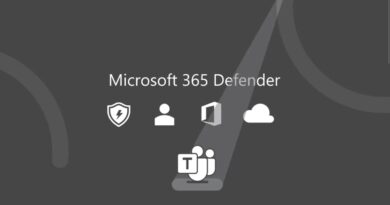9 tips for aligning SEO with the B2B buyer’s journey
Learn to tailor your SEO strategy for the longer, more complex B2B buyer’s journey and create content that meets the needs of stakeholders.
The purchase journey of a B2B buyer differs greatly from that of a B2C shopper.
With the proper strategy, SEO can become a strong acquisition channel for any organization in the B2B space.
Below are top tips for ensuring your SEO strategy is set up for success across every stage of the B2B buyer’s journey.
Understanding the B2B buyer’s journey
The buyer’s journey can still be viewed through the traditional purchase funnel lens of awareness, consideration and decision.
However, in recent years, B2B purchasers have increasingly been exploring solutions and performing research well into the funnel.
Awareness stage
- The beginning of the B2B buyer’s journey.
- At this point, potential customers are just starting to recognize a problem or need and are seeking informational content to gain insights or answers.
- SEO should focus on targeting broad, informational keywords that align with the general inquiries of your target audience.
Consideration stage
- Potential buyers have clearly defined their problem or need and are now exploring different solutions, products, or services.
- In this more focused time period, they compare options, read reviews, and delve deeper into the specifics of each solution.
- SEO content should be crafted to highlight the unique selling points of your products or services and how they compare to competitors, leveraging case studies, reviews, and testimonials.
Decision stage
- The buyer has all the necessary information and is ready to purchase.
- This stage is characterized by specific, high-intent searches that could include specific product names, pricing information, or implementation details.
- SEO is critical in capturing high-intent searches and directing them to conversion-optimized pages.
The post-pandemic world has seen a rise in digital events and communities (think webinars and social media groups) replacing in-person gatherings like conferences where B2B sales traditionally occurred.
The result is an increased reliance on content consumption when making purchase decisions, underscoring the need for a strong SEO strategy.
B2B SEO tips for the Awareness stage
1. Begin your keyword research at the top of the funnel
Developing an effective B2B SEO strategy begins by identifying your target audience and understanding their needs, search behaviors and personas.
As you begin to tailor your content marketing and SEO initiatives to the B2B customer journey, it’s crucial to understand the kind of information they seek before they’ve even begun to think about your brand or the type of solution they want.
Once you gain this solid understanding, explore how your buyer conducts online searches with keyword research.
Identify broad informational keywords within your category and match your content (i.e., pricing information, product demos or category explainers) with the most relevant and popular user queries.
If you’re an SEO professional working for an agency, now is the time to get to know your client’s products and industry-specific language if you haven’t already.
Understanding the intent behind prospective buyers’ searches – whether they aim to know, go, do or buy – is key in determining the appropriate type of content to provide at each stage of their journey.
Dig deeper: B2B keyword research: A comprehensive guide
2. Understand the B2B difference
The sales funnel for B2B purchases is often longer and more complicated than its B2C counterpart. There are multiple C-suite stakeholders and a greater focus on ROI and the bottom line.
Additionally, keyword search volume and qualified leads are generally lower in B2B. This highlights the significance of quality top-of-funnel traffic over quantity.
Even at these early stages, create relevant content that:
- Speaks to your product or service efficiencies and effectiveness.
- Is easily translatable to decision-makers who might be removed from the immediate process.
The content focus at this stage should be building visibility and trust, which can be accomplished via blog posts, guides and introductory videos.
You can also demonstrate your expertise within the field with whitepapers and ebooks.
3. Create content that guides buyers
When creating and optimizing content, keep your end-user in mind and envision their purchase journey. Topic clusters are an excellent way to move visitors from the awareness to the consideration stage.
Structuring your website information like this lets you showcase deep expertise in a specific area. This is vital for B2B businesses, especially those operating in specialized or niche markets.
By thoroughly covering a topic, you provide valuable information to your audience and increase the likelihood of dominating search engine results pages (SERPs) for a range of related queries, not just isolated keywords.
For example, let’s consider a CRM software provider for small businesses.
- A pillar page with the topic “Comprehensive Guide to CRM for Small and Medium-Sized Businesses” might capture awareness searchers with the relatively high volume “crm software” and “crm software small business” keywords.
- From there, links to cluster pages like “Choosing the Right CRM for Your Small Business: What to Look For” and “Maximizing ROI from CRM: Strategies for SMEs” offer additional insights and product-specific information while moving the reader closer to purchase.
B2B SEO tips for the Consideration stage
4. Target comparison and evaluation keywords
At this stage, focus on identifying keywords that potential customers use when comparing products or services. These keywords often include terms like:
- “Comparison”
- “Versus” or “vs.”
- “Features”
- “Benefits”
- “Reviews”
Use keyword research tools to find the specific phrases your target audience uses in the consideration phase. Subsequently, develop content that directly addresses the comparison queries.
Comprehensive comparison guides, blog posts that compare features of different products or services, and detailed cost-effectiveness analyses could perform well for an audience that is inching closer to converting.
5. Leverage case studies and testimonials
These content types are powerful tools for demonstrating the effectiveness of your product. Optimize these case studies with relevant keywords, especially those your potential customers are likely to use when looking for real-world examples of your product or service.
Users might also be drawn to interactive and product-specific features, like an ROI calculator, which can help develop a business case for stakeholders. This stage is where you might begin incorporating long-tail keywords alongside broader queries.
Google’s E-E-A-T guidelines matter – especially “experience.” Your content should be unbiased, informative and valuable, helping readers make informed decisions.
Real verified user reviews, guest posts from subject matter experts, and thought leadership-style pieces from company executives can all help connote experience to visitors.
6. Enhance your onsite experience for users and search engines
Ensure each product has a dedicated landing page optimized for search engines and users.
These pages should be informative, easy to navigate, make logical sense within your greater site structure, and include clear calls to action (CTAs). Use targeted keywords in the page titles, meta descriptions, headers, and content.
Improve the site structure and navigation to make it easy for users and search engines to find relevant content.
Follow the same organizational structure as your pillar and cluster content: as visitors learn more about your offerings, they should be logically guided toward a conversion event.
When it comes to evaluating the success of your efforts, focus on engagement metrics like:
- Time on site.
- Bounce rate.
- Pageviews per session.
B2B marketers often place a greater emphasis on “micro-conversions” compared to those in the B2C sector.
SEO is pivotal here by steering potential customers to different stages of the funnel, where they can interact through actions like downloading an ebook or viewing a product demo.
These interactions are incremental steps toward a high-value and hopefully long-lasting purchase relationship.
B2B SEO tips for the Decision stage
7. Focus on high-intent keywords
At this stage, it’s necessary to identify and target your bottom-of-funnel keywords with a concentration on queries that indicate a readiness to purchase. These include more specific branded terms, product names, or service-specific queries.
Optimize your content for featured snippets, “People also ask”, or knowledge graphs which can provide immediate information and enhance visibility.
8. Streamline conversion paths
Your landing pages should be finely tuned to encourage conversions. They should:
- Load quickly.
- Display well on mobile devices.
- Provide all the necessary information at a glance.
Consider A/B or CRO testing to land on a clean and effective design, focusing on the product and driving conversions without unnecessary distractions.
CTAs should be clear, compelling, and strategically placed. They should naturally guide the user toward taking the next step, whether filling out a contact form, downloading a trial offer, or completing a purchase.
9. Build trust with valuable and validating technical content
Develop content that caters to visitors making the final decision and those looking to validate their purchase. This includes:
- Detailed product comparisons.
- Reviews.
- How-to guides addressing different use cases.
Third-party reports or reviews demonstrating how well your offering stacks up to competitors can be especially effective here.
Pay special attention to addressing popular branded queries. Searchers here are likely already deep in the decision stage, so you can capture attention (and get ahead of any potentially negative third-party pages) by posting your own reviews, comparisons and product feature guides.
The accuracy and authority of your content are paramount for buyers in the decision stage. Regularly review your onsite technical information to ensure it is up-to-date, accurate and reflects the current state of your offerings.
SEO’s role in the B2B buyer’s journey
Each stage of the B2B buyer’s journey – awareness, consideration, and decision – demands a distinct approach, blending traditional SEO techniques with a deep understanding of the B2B purchasing process and a given business’s specific offering.
Use these strategies to guide B2B buyers to make informed decisions effectively. Staying agile and informed will help you maintain a competitive edge and drive meaningful engagement with your target audience.
Opinions expressed in this article are those of the guest author and not necessarily Search Engine Land. Staff authors are listed here.


